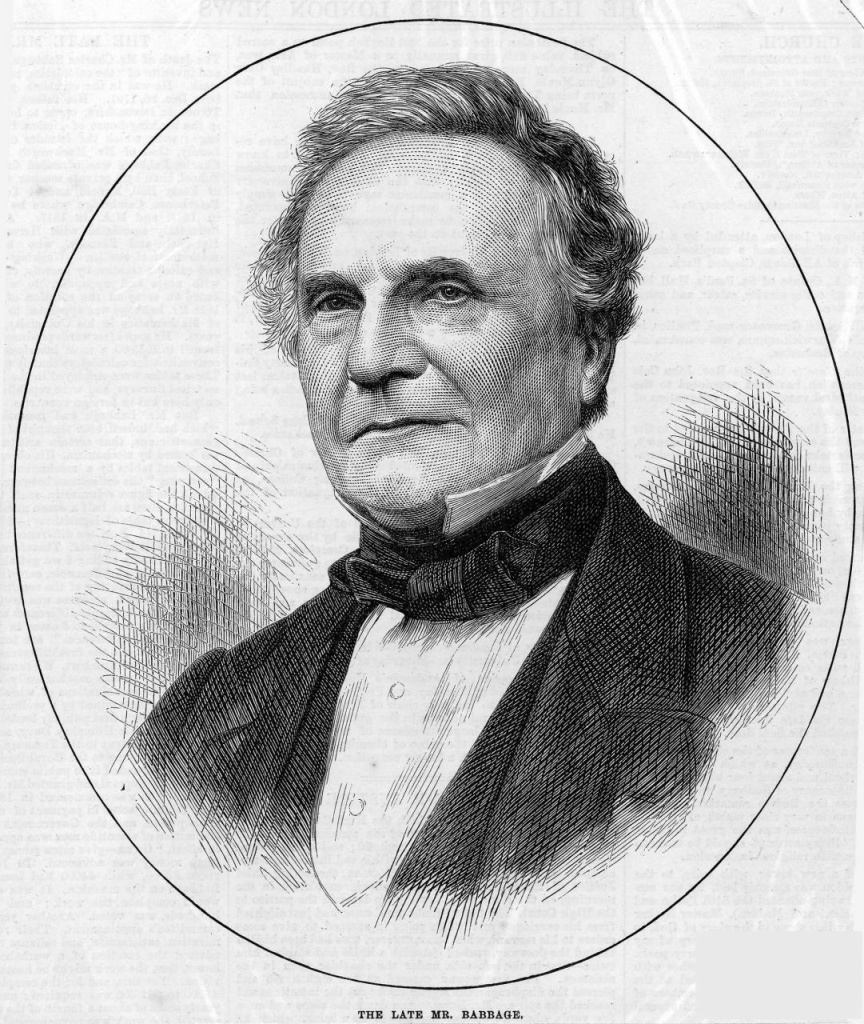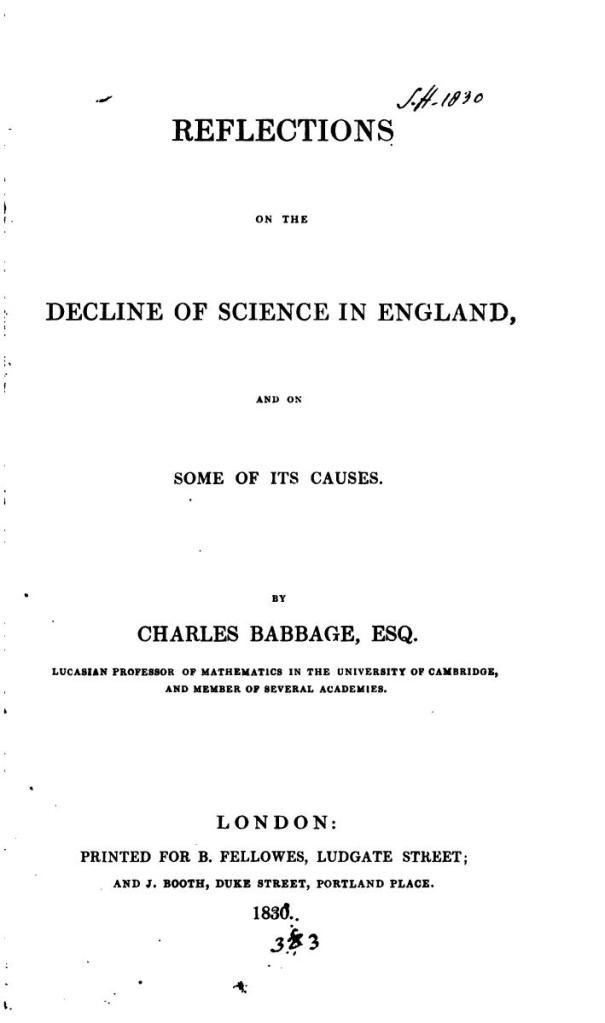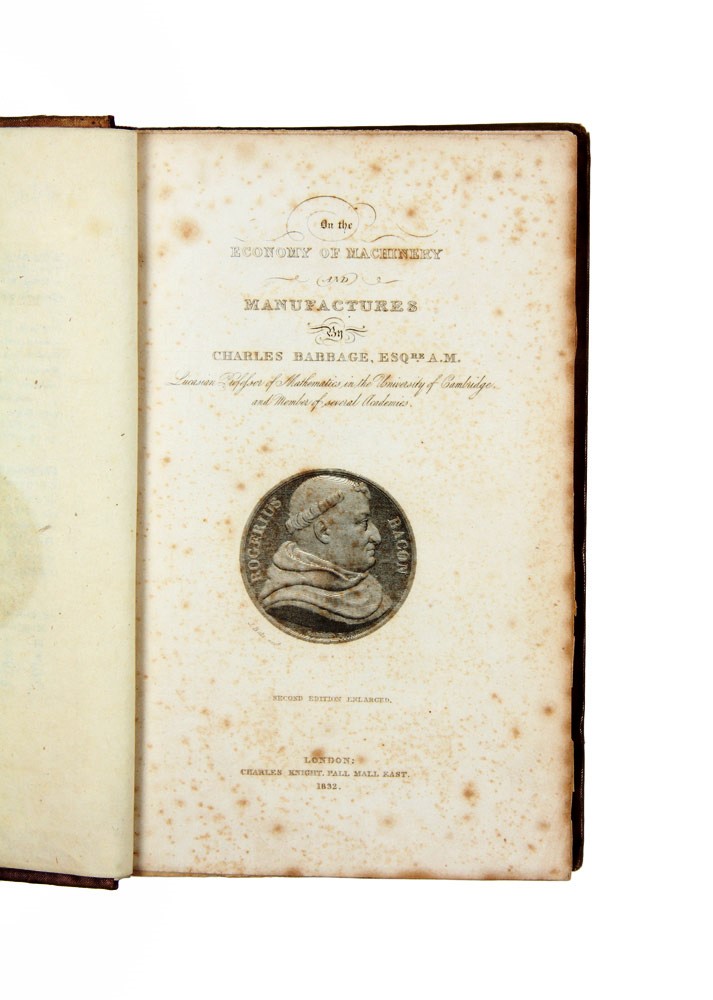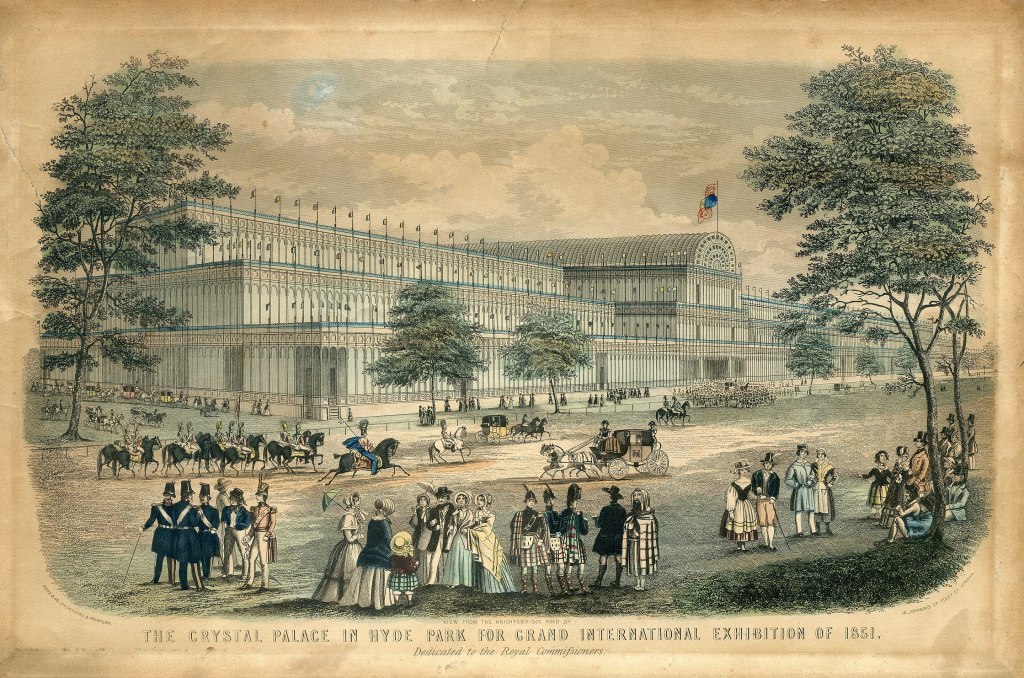The acolytes of Ada Lovelace are big fans of Sydney Padua’s comic book, The Thrilling Adventures of Lovelace and Babbage (Penguin, 2015). One can not deny Padua’s talent as a graphic artist, but her largely warped (she claims mostly true) account of their relationship is based on heavy quote mining and even distortion of quotes to make Lovelace look good and Babbage less than good. Just to give one example, there are many, many more, of her distortion of known facts she writes:
I believe Lovelace used music as an example not only because she was steeped in music theory, but because she enjoyed yanking Babbage’s chain, and he famously hated music (my emphasis)
There is no evidence whatsoever that Babbage hated music, in fact rather the opposite. What Padua is playing on is Babbage’s infamous war with the street musicians of London and was about noise pollution and not about music per se. In fact, anybody, who has listened to a half-cut busker launching into their out of tune rendition of Wonderwall for the third time in an hour, would have a lot of sympathy with Babbage’s attitude.
I’m not going to analyse all the errors and deliberate distortions in Padua’s work, but I will examine in some detail one of her bizarre statements:
It’s not clear why Babbage himself never published anything other than vague summaries about his own machine. He published volumes of ramblings on every subject under the sun (my emphasis) except that of his life’s work (my emphasis)
Calling the Analytical Engine “his life’s work” shows an ignorance of the man and his activities. This is a product of a sort of presentism that has reduced Charles Babbage in the popular imagination to “the inventor of the first computer” and blended out the rest of his rich and complicated life. A life full of scientific, mathematical, and socio-political activities. The Analytical Engine was a major project in Babbage’s life, but it was far from being his life’s work.

Babbage actually only published a total of eight books over a period of forty years, none of which is in anyway rambling. If we look at the list a little more closely, then it actually reduces to three.
- (1825) Account of the repetition of M. Arago’s experiments on the magnetism manifested by various substances during the act of rotation, London, William Nicol
- Babbage, Charles (1826). A Comparative View of the Various Institutions for the Assurance of Lives. London: J. Mawman.
- Babbage, Charles (1830). Reflections on the Decline of Science in England, and on Some of Its Causes. London: B. Fellowes.
- Babbage, Charles (1832).On the Economy of Machinery and Manufactures London: Charles Knight.
- Babbage, Charles (1837).The Ninth Bridgewater Treatise, a Fragment. London: John Murray.
- Babbage, Charles (1841).Table of the Logarithms of the Natural Numbers from 1 to 108000. London: William Clowes and Sons.
- Babbage, Charles (1851).The Exposition of 1851. London: John Murray.
- Babbage, Charles (1864).Passages from the Life of a Philosopher, London, Longman
No: 1 on our list is a thirty-page scientific paper co-authored with John Herschel and like No: 6, a book of log tables, need not bother us here. No: 2 is a sort of consumers guide to life insurance and is not really relevant here. Statistical tables of life expectancy and insurance schemes based on them had become a thing for mathematicians since the early eighteenth century, Edmund Halley had dabbled, for example. The leading English mathematician John Joseph Sylvester (1814–1897) worked for a number of years as an insurance mathematician. No:5 The Ninth Bridgewater Thesis gives Babbage’s views on Natural Theology, which he developed in a separate paper on his rational explanation for miracles based on programming of his Difference Engine, which I have dealt with here. No. 8 is of course his autobiography, a very interesting read. All of Babbage’s literary output has a strong campaigning element.
This leaves just three volumes that we have to consider in terms of the Padua quote, Reflections on the Decline of Science in England, and on Some of Its Causes, On the Economy of Machinery and Manufactures, and The Exposition of 1851.
Reflections on the Decline of Science in England, and on Some of Its Causes is as it’s title would suggest a socio-political polemic largely directed as the Royal Society. Babbage thought correctly that there had been a decline in mathematics and physics in the UK over the eighteenth century, which was continued into the nineteenth. He began his attacks on the scientific establishment during his time as a student at Cambridge, when together with John Herschel and George Peacock he founded the Analytical Society, which campaigned to replace the teaching of Newton’s dated mathematics and physics with the much more advanced material from the continent. His Reflections on the Decline of Science upped the ante, as the now established Lucasian Professor for mathematics he launched a full broadside against the scientific established and in particular the Royal Society.

Babbage was not alone in his wish for reform and he and his supporters were labelled the Declinarians. The Declarians failed in their attempt to introduce reform into the Royal Society, but the result of their campaign was the creation of the British Association for the Advancement of Science, which was founded in 1831 by William Harcourt, David Brewster, William Whewell, James Johnston, and Babbage. Babbage’s book was regarded as the spearhead of the campaign. The BAAS was a new public mouthpiece for the scientific establishment that was more open, outward going, and liberal than the moribund Royal Society.
Babbage’s On the Economy of Machinery and Manufactures from 1832, might be considered Babbage’s most important publication. Following the death of his first wife in 1827, Babbage went on a several-year tour of the continent visiting all the factories and institutions, which used and/or dependent on automation of some sort, studying and investigating. On his return from the continent, he did the same in the UK, once again examining all of the industrial applications of automation that he could find. This research took up more than ten years and Babbage became, probably, the greatest living authority on the entire subject of automation. This knowledge led him in two different directions. On the one hand it lay behind his decision the abandon his Difference Engine, a special-purpose computer, and instead invest his energy in his planned Analytical Engine, a general-purpose computer. On the other hand, it led to him writing his On the Economy of Machinery and Manufactures.

When it appeared On the Economy of Machinery and Manufactures was a unique publication, nothing quite like it had ever been published before. The book deals with the economic, social, political, and practical aspects of automation, and has been called on influential early work on operational research. It grew out of an earlier essay in the Encyclopædia Metropolitana An essay on the general principles which regulate the application of machinery to manufactures and the mechanical arts (1827). The book was a major success with a fourth edition appearing in 1836. From the second edition onwards, it included an extra section on political economy, a subject not included in the first edition.
The book also contains a description of what is now known a Babbage’s Principle, which emphasises the commercial advantage of more careful division of labour. An idea already anticipated in the work of the Italian economist Melchiorre Gioja (1767–1829). The Babbage’s Principle means dividing up work processes amongst several workers according to the varying skills. Such a division of labour was behind the origin of his Difference Engine. In the eighteenth century the French government had broken-down the calculation of mathematical tables to simple steps with each computer, those doing the calculations, often women, just doing one of two steps before passing the calculation onto the next computer. The Difference Engine was designed to automate this process.
Babbage never the most diplomatic of intellectuals thoroughly annoyed the publishing industry by including a detailed analysis of book production in On the Economy of Machinery and Manufactures including revealing the publishing trade’s profitability.
Babbage’s book had a major influence on the development of economics in the nineteenth century and was quoted in the work of John Stuart Mill, Karl Marx, and John Ruskin. The book was translated into both French and German. It has been argued that the book influenced the layout of the Great Exhibition of 1851 and it to this we turn for Babbage’s last book, his The Exposition of 1851.

The book is Babbage’s analysis of the Great Exhibition of 1851, brought into life by the Royal Society for the Encouragement of Arts, Manufactures and Commerce, and for which the original Crystal Palace was created. The Great Exhibition also led to the establishment of the V&A, the Natural History Museum, and the Science Museum to provide permanent homes for many of the exhibits. This was the first world fair and Babbage was personally involved. One of the working modules of his Difference Engine was on display and in the windows of his house, which lay on the route to the exhibition, he demonstrated his optical signally device for ships, inviting visitors to the Crystal Palace to post the signalled number in his letterbox. To a large extent The Exposition of 1851 is a coda to both Reflections on the Decline of Science and On the Economy of Machinery and Manufactures, which leads us an answer to the question of Babbage’s life’s work.
Padua thinks incorrectly that the Analytical Engine was his life’s work, a fallacy that is certainly shared by those, who only know Babbage as the inventor of the “first computer.” In reality, Babbage’s life’s work was the promotion and advancement of science and technology, his calculating engines representing only one aspect of a much wider vision. From his days as a student fighting for an improvement in the teaching of the mathematical sciences at Cambridge University, through his campaign to modernise the Royal Society, which led instead to the creation of the BAAS, he was also instrumental in founding the Astronomical Society. His research on automation leading to the highly influential On the Economy of Machinery and Manufactures and his direct and indirect involvement in the Great Exhibition. All of these served one end the promotion and advancement of science and its applications.